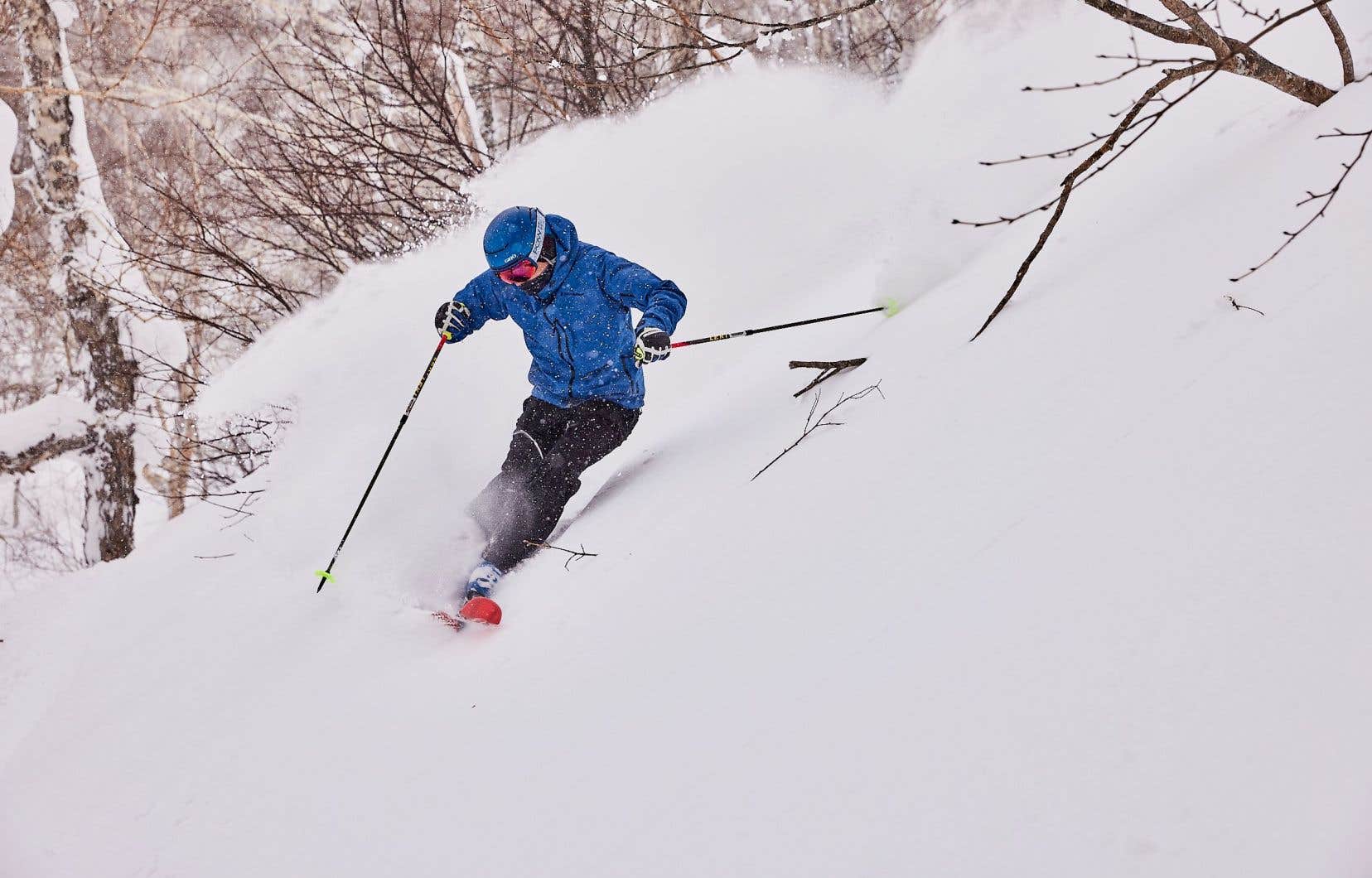This text is part of the special Pleasures notebook
Hokkaido, the northernmost of Japan’s four main islands, is rich in white gold coveted by water sports enthusiasts. Foray into feather snow paradise!
“But it’s just snow!” » exclaims with a laugh the one who fell in when he was little. A native of Hokkaido, the assistant ski director at Club Med Tomamu, at the eponymous resort, is surprised by our curiosity for an element that is so familiar to him. “As a child, when I left my house in winter, I would put on my skis and disappear into the powder. She’s part of my story…” says Tetsuya Danzaka, shrugging his shoulders.
No, it’s not new that snow is abundant on the second largest island in the Japanese archipelago. But more importantly, its southwest region brings together all the conditions necessary for the creation of this konayuki coveted by snow sports enthusiasts. There we find icy air blowing from Siberia, water vapor from the Sea of Japan and the mountains which act as a barrier and encourage condensation. Result ? Snowflakes with a Shinkansen effect since the skis levitate like this TGV on its rails. In short, it’s powder heaven!
In the Land of the Rising Sun, the practice of alpine skiing dates back to the 1910s. “An Austrian lieutenant colonel was invited to Niigata, on the west coast of the island of Honshu, to teach alpine skiing and the art of war in the snow to the Japanese army”, relates Kristian Lund, one of the directors of Niseko Tourism and editor-in-chief of the magazine Powderlife. Its popularity exploded among locals between 1950 and 1990, then began to decline. “In the 1990s and 2000s, the discovery of Japan’s incredible powder snow by foreign skiers and snowboarders helped to revive it in several major resorts,” he says. One of them is Niseko, which Voyages Gendron and the freestyle skier and Olympian Jean-Luc Brassard made known in Quebec.
Ski more often or for longer?
In this same region, around Sapporo, Club Med manages four villages on the island of Hokkaido. They also welcome customers from all over the world. The Japanese only make up 8% of the guests, the majority of them coming from elsewhere in Asia (including Singapore, Hong Kong and Taiwan) and Australia. Unsurprisingly, half of these vacationers do not ski, observed Marc Létourneau, Club Med general manager, Northeast Asia, Japan and Korea. “Asians and Australians first want to see the snow, which they don’t know, and to stay in the mountains,” he notes.
According to the man who grew up on the slopes of Bromont, Quebecers will find what they are looking for in the region as long as they do not compare it to the Canadian Rockies or the Alps. “Here, the mountains are not very high, we are talking about an altitude of 1100-1200 meters,” he says. Obviously, Quebecers will not come just for the skiing: they will come for Japan itself and the powder experience. » Especially since in Kiroro, the average annual snowfall is around twenty meters!
In fact, the best criterion for selecting a Japanese ski resort would be its traffic rather than its altitude difference, according to the friendly director. “In Kiroro [dénivelé de 610 mètres], there are 3000 to 4000 skiers per day on 30 km of slopes, he estimates. In Niseko, at four interconnected resorts on one of the highest mountains in the region [dénivelé d’environ 950 mètres], they can be up to 10 times more on 50 km of slopes. So, do we want to ski more often or for longer? »
One thing is certain, on-piste or off-piste, the resorts of Hokkaido suit everyone. “For beginners, for whom falls in the snow are gentle; to intermediates because they will get a taste of what deep powder is like. Then to the experts, because they will experience the best descents of their lives! » said Mr. Lund.
Apres-ski sushi
After sporting feats on the slopes or ski hiking trails, the onsen (thermal bath) experience is great, argues Mr. Létourneau. At the rotenburo (open-air pool), you have the added bonus of a view of the surrounding nature. At the family-friendly Club Med in Tomamu, guests have access to the Mina-Mina Beach complex, equipped with a wave pool and a very pretty outdoor bath.
Have you marinated enough? Well, eat now! In Niseko, in addition to isakayas (pubs), there are starred or Michelin-recommended restaurants. “This is something completely new in the ski industry in Japan. This is due to the rapid growth of the resort and its international development,” explains Mr. Lund.
In Tomamu as in Kiroro, the resorts that your devoted journalist recently visited, the culinary experience is quite different, and for good reason: commercial construction is minimal. Kiroro has four infrastructures, and that’s it! At the base of the site, there is the Mountain Center and Club Med Kiroro Peak, aimed at couples or households with teenagers. Very close by, there is a condotel as well as the Club Med Kiroro Grand, designed for families with young children and inaugurated last December. In the absence of a lively nightlife, we are treated to a magnificent natural setting, practically untouched, and to the gastronomic offer of the all-inclusive pioneer.
Among the most authentic dining experiences offered at Kiroro Grand is Chinese fondue with local sauce. Yakiniku, which consists of grilling your own food at your table; and, above all, the 12-course sushi and seafood tasting meal at the traditional Ebisu restaurant. After skiing on feathery snow, how good it is to find yourself satisfied on a tatami mat!
Carolyne Parent was the guest of Club Med, which had no say in this article.
This content was produced by the Special Publications team at Duty, relating to marketing. The writing of the Duty did not take part.
